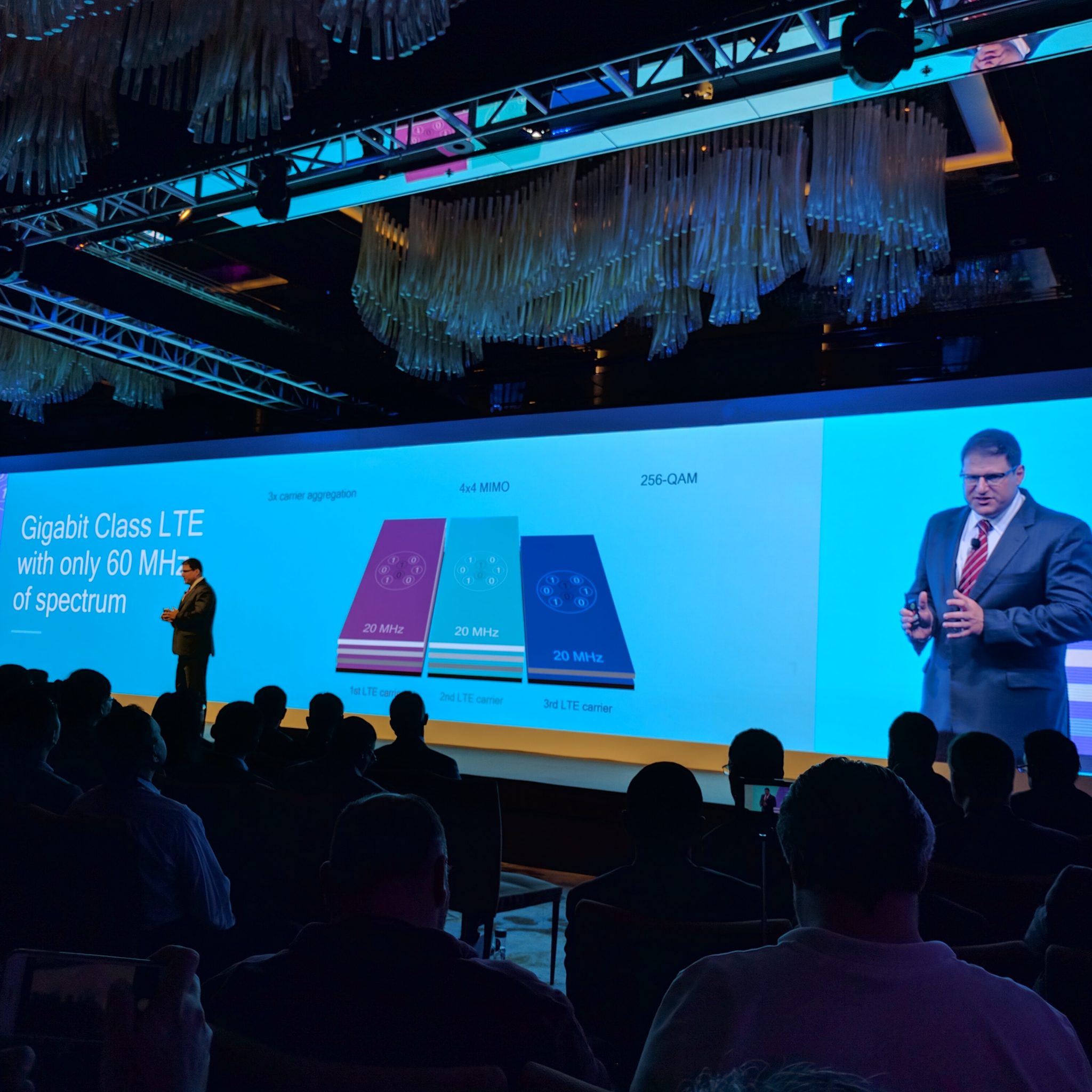Qualcomm, Telstra, Ericsson and Netgear announce world’s first gigabit class LTE device and gigabit-ready network
HONG KONG – At the 4G/5G Summit today, Qualcomm announced it has worked with Telstra, Ericsson and Netgear on the world’s first gigabit LTE mobile device, the Netgear MR1100 router, and the first gigabit class commercially ready network. The router is based on Qualcomm’s Snapdragon X16 LTE modem along with Qualcomm Wi-Fi solutions, the first consumer-end device capable of reaching download speeds up to 1 gigabits per second. It is compatible with Telstra’s new gigabit LTE network enabled by Ericsson. These new data speeds are being deployed on the way to “5G” in order to take on virtual reality, near-instant access to cloud storage and services, and fast downloads of multimedia content, among other emerging data demands.
The X16 LTE modem also will be integrated into Qualcomm’s next-generation Snapdragon 800 series chips, its premium line found in flagship devices like the LG G5.
“Achieving the world’s first gigabit class LTE download speeds between a mobile device and commercial ready network is another industry achievement toward the availability of gigabit LTE services,” said Serge Willenegger, SVP at Qualcomm. “Qualcomm Technologies has long been a leader in LTE, pioneering many of the building blocks for 3G and 4G ,and now paving the way to 5G. We’re excited to celebrate this milestone with our partners and to demonstrate our leadership in the commercialization of key technologies that will be foundational elements of future 5G deployments.”
The means to gigabit
Netgear worked with Qualcomm to integrate the X16 LTE modem and Qualcomm Wi-Fi solutions to offer gigabit speeds into the new Netgear MR1100. Gigabit class LTE download speeds are achieved through a combination of 3x carrier aggregation, 4×4 multiple-input/multiple-output on two aggregated carriers, 2×2 MIMO on the third carrier and 256 quadrature amplitude modulation higher order modulation. Qualcomm is hoping the arrival of gigabit LTE download speeds can help original equipment manufacturers create a new standard of mobile devices that can deliver fiber-like download speeds wirelessly to expand opportunities for new experiences and revenue streams.

“Since our founding in 1996, Netgear has led the industry in providing the world with the best-in-class connectivity experience,” said Andrew Green, VP of mobile network products at Netgear. “As the pioneer in creating the world’s first gBit class LTE mobile device, Netgear is proud to deliver incredibly fast fiber-like connectivity – wirelessly. Netgear is redefining what a mobile router can be and the experiences it can deliver.”
1 Gbps over-the-air speeds
Qualcomm claims Telstra’s new gigabit class LTE network to be the first LTE network in the world to support over-the-air data download speeds up to 1 Gbps. The network utilizes network infrastructure equipment and software from Ericsson to achieve these speeds.
“We pride ourselves on our connectivity expertise and we continue that tradition today by completing the first commercialization of a gigabit class LTE network and device,” said Mike Wright, Telstra’s group managing director of networks. “With the world’s first gigabit Class LTE network, we have substantially improved our network capacity and increased real-world LTE download speeds, while also gaining a distinct advantage over competitors as we can now offer an entirely new class of LTE service.”
Path to 5G
Qualcomm and Ericsson believe achieving gigabit speeds over a cellular network is a step toward the introduction of true 5G.
“Telstra’s commercial-ready gigabit class LTE network and device is an important milestone as it paves the path to 5G,” said Per Narvinger, head of product line LTE at Ericsson. “Many of the techniques enabled by Ericsson technology to achieve these ultra-high speeds, such as the use of multiple spectrum bands, advanced MIMO antenna technology, higher order modulation scheme, as well as Ericsson Lean Carrier, are critical to making 5G a reality.”

